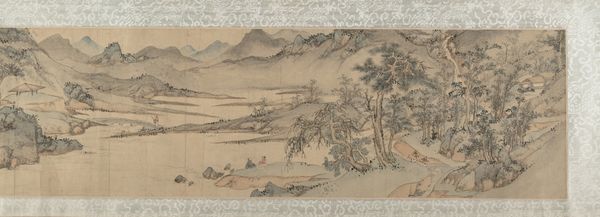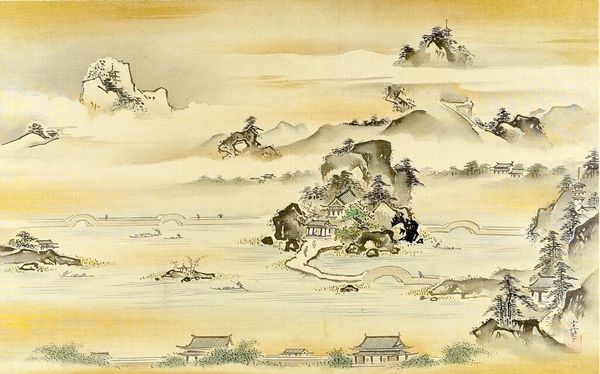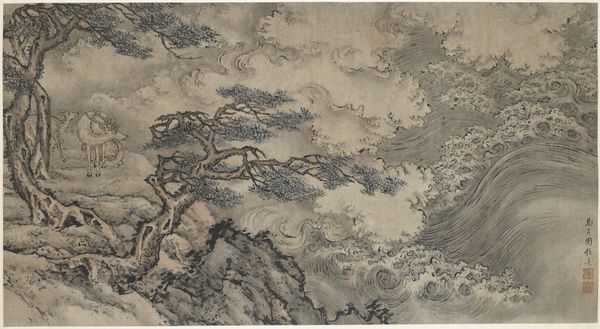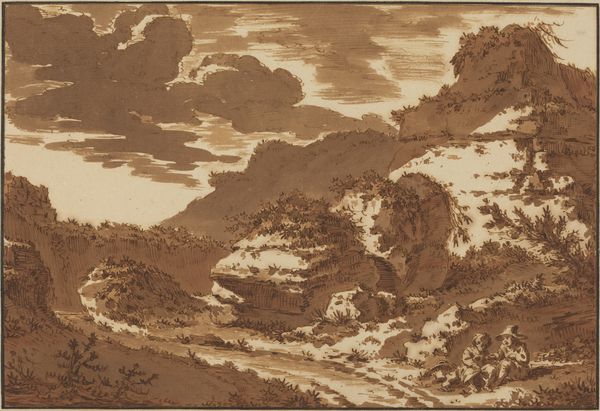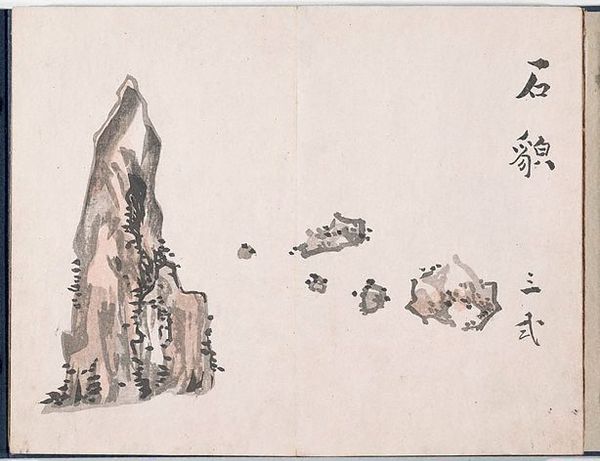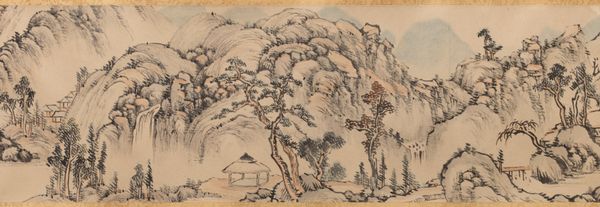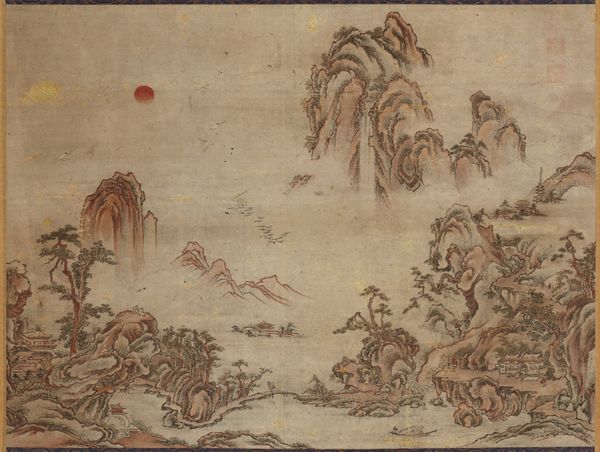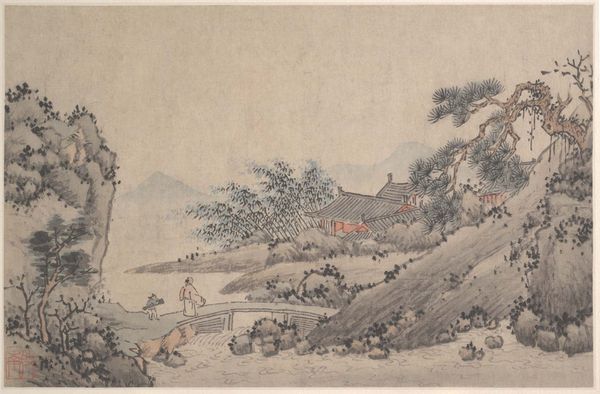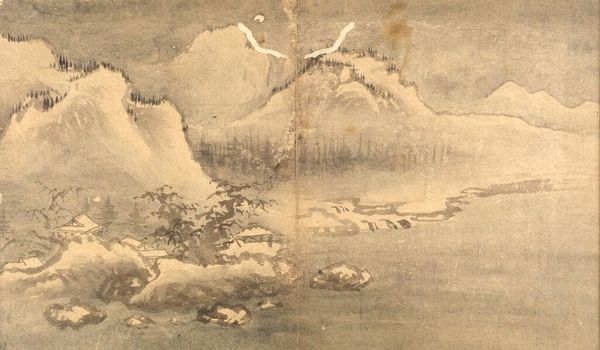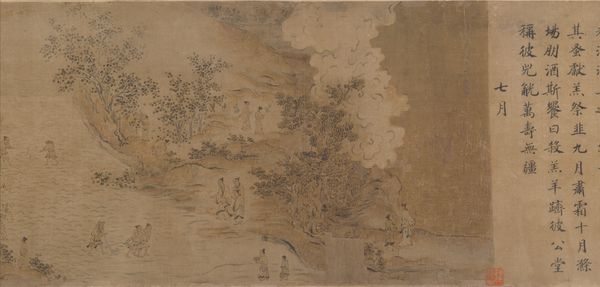
Copyright: Public domain
Ike no Taiga created this hanging scroll called "Landscape with Pavilion" in eighteenth-century Japan, using ink and color on paper. It encapsulates the artist's deep engagement with Chinese literati painting, a style which emphasized scholarship and personal expression. Taiga, living in an era of strict social hierarchies under the Tokugawa Shogunate, turned to the culture of China as a means of expressing social critique. The pavilion, a recurring motif, suggests a space for reflection, a retreat from the rigid expectations of Japanese society. The deliberate brushstrokes evoke a sense of cultivated amateurism. Taiga was an active participant in artistic circles that questioned the established norms of the Kano school of painting, which was patronized by the Shogunate. Further insight into Taiga’s world and the networks of artists, poets, and scholars to which he belonged can be gained by reading period diaries and collections of letters. These can shed light on the social dynamics and intellectual ferment of the Edo period.
Comments
No comments
Be the first to comment and join the conversation on the ultimate creative platform.
